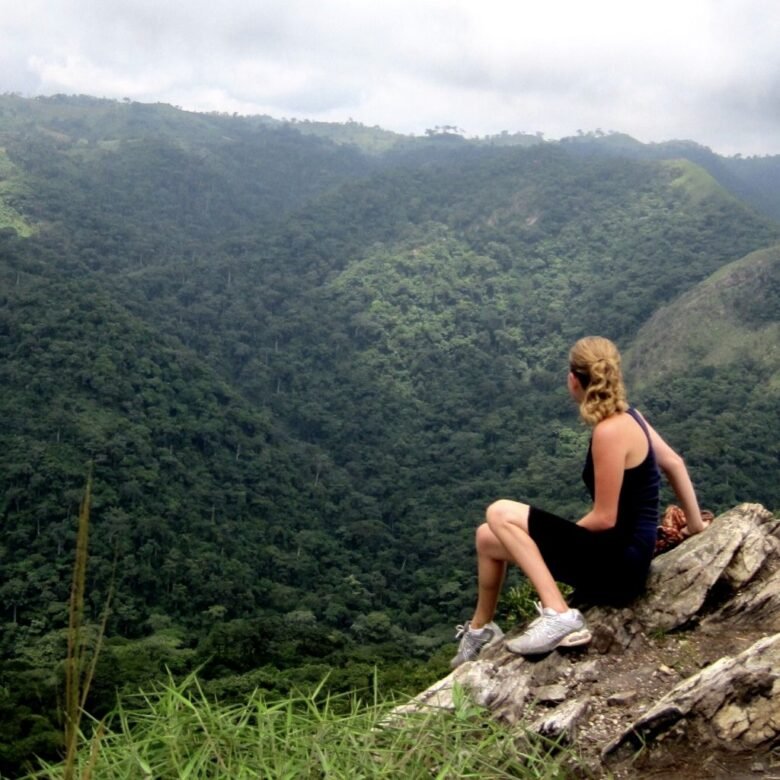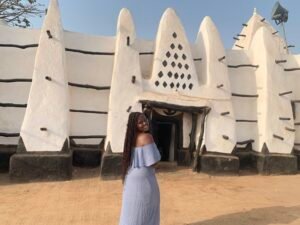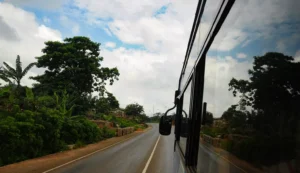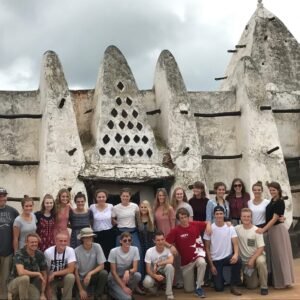Tucked between the eastern border of Ghana and the Volta Lake lies the Volta Region—a captivating blend of mountains, waterfalls, lush forests, tranquil lakes, and cultural richness. It’s one of the country’s most scenic and ecologically diverse areas, yet remains relatively underexplored by mainstream tourism. For travelers seeking natural beauty, adventure, and authentic cultural experiences, the Volta Region is an essential destination.
This guide outlines the top attractions in the Volta Region, complete with travel tips and suggested routes to help you make the most of your journey through Eastern Ghana.
1. Wli Waterfalls – Ghana’s Tallest Waterfall
Location: Hohoe District, near the Togo border
Best Time to Visit: May to September (wet season for strongest flow)
Wli (pronounced “Vlee”) Waterfalls is the tallest in Ghana and West Africa, plunging over 80 meters in two stages. Nestled in the Agumatsa Forest Reserve, it’s a stunning site surrounded by green mountains and rich biodiversity.
What to Expect:
- A scenic 45-minute hike to the lower falls
- Option to hike further to the upper falls (2–3 hours, more challenging)
- Bats nesting in the cave behind the falls
- Opportunity to swim at the base of the lower falls
Travel Tip: Bring good hiking shoes, insect repellent, and swimwear. Arrive early to avoid crowds.
Entry Fee: GHS 15–30
Guides: Required for upper falls (available at the entrance)
2. Mount Afadja (Afadjato) – Ghana’s Highest Peak
Location: Liati Wote, Hohoe District
Elevation: 885 meters (2,904 feet)
Mount Afadjato is Ghana’s highest point and a popular hiking destination for both locals and international tourists. It offers panoramic views of Ghana and neighboring Togo from the summit.
Hiking Info:
- Moderate 45–60 minute climb
- Well-marked trail through lush forest
- Often combined with a visit to nearby Tagbo Falls
Nearby Attractions:
- Tagbo Falls: A short drive from Afadjato, featuring a peaceful jungle trail and cascading water
- Tafi Atome Monkey Sanctuary: Playful Mona monkeys living in a protected village forest
Entry Fee: GHS 20–40
Local guides: Provided and strongly recommended
3. Volta Lake – Ghana’s Inland Ocean
Location: Spanning the Volta Region and beyond
Significance: One of the world’s largest man-made lakes
Lake Volta offers wide vistas, peaceful boat rides, and waterside relaxation. It’s the heart of Eastern Ghana’s ecosystem and a hub for fishing and transport.
Popular Lake Activities:
- Boat cruises at Akosombo or Kpando
- Lakeside picnics or sunsets at Royal Senchi or BridgeView Resort
- Kayaking and canoe rentals available at some lodges
Notable Landmarks:
- Adomi Bridge: Ghana’s first major suspension bridge
- Dodi Island: Reachable via the Dodi Princess cruise (weekends only, from Akosombo)
Travel Tip: Combine a lake trip with a visit to Akosombo Dam, Ghana’s hydroelectric powerhouse.
4. Amedzofe – Tranquil Village in the Clouds
Location: Near Ho, in the Avatime Hills
At nearly 700 meters above sea level, Amedzofe is one of Ghana’s highest habitable areas and a haven for hikers, photographers, and peace seekers.
Highlights:
- Cool mountain climate year-round
- Hiking to Mount Gemi, marked by a towering iron cross at the summit
- Ote Falls, a scenic waterfall reachable by a 30–45 minute trek
- Panoramic views of the Volta plains and surrounding hills
Cultural Note: Amedzofe is known for its warm, community-driven tourism model and local guide system.
5. Tafi Atome Monkey Sanctuary – Human and Wildlife Harmony
Location: Near Hohoe
Tafi Atome is a village that has long protected its forest-dwelling Mona monkeys, viewing them as sacred messengers.
What You’ll Experience:
- Monkeys roaming freely and often coming close to visitors
- Guided walks through the forest
- Educational talks about conservation and the village’s cultural values
Entry Fee: GHS 20–30
Tour Duration: 30–60 minutes
Best Time: Morning or late afternoon when monkeys are most active
Responsible Travel Tip: Don’t feed the monkeys unless under the guide’s instruction.
6. Kente Weaving at Agbozume and Kpetoe
Location: Agbozume (southern Volta), Kpetoe (near Ho)
The Volta Region is one of the cultural homes of Ewe Kente weaving, a tradition distinct from the more famous Ashanti Kente.
What You’ll See:
- Weavers crafting colorful, symbolic cloths by hand
- The use of narrow looms unique to Ewe weaving
- Cultural meanings behind color and pattern choices
Visitors can watch the weaving process, buy directly from artisans, or even learn to weave under local instruction.
Cultural Tip: Ask before taking photos and consider tipping your guide or weaver.
7. Woe Lighthouse and Cape St. Paul
Location: Keta District, southeastern coast
The Woe Lighthouse, perched on the Gulf of Guinea, offers some of the best coastal views in the Volta Region. Nearby Cape St. Paul is historically noted as one of the first landfalls of early European explorers in West Africa.
Nearby Sights:
- Keta Lagoon: Ghana’s largest lagoon and a birdwatcher’s paradise
- Fort Prinzenstein: A small Danish fort, part of Ghana’s slave trade history
- Sea defense walls and mangrove conservation projects
Ideal For: Coastal photography, historical reflection, and nature walks
8. Kyabobo National Park – Untouched Wilderness
Location: Nkwanta South, near Ghana–Togo border
Best For: Experienced hikers and ecotourists
Kyabobo National Park is Ghana’s least visited protected area, making it ideal for those seeking unspoiled nature.
What to Expect:
- Home to buffalo, monkeys, and over 200 bird species
- Hiking trails through forests and hills
- Mount Dzebobo (third-highest in Ghana), offering great views of Lake Volta
Facilities: Basic guesthouses and camping areas
Travel Tip: Contact park management in advance to arrange guides and lodging
9. Ho and Surrounding Attractions
Location: Regional capital of Volta
Though primarily administrative, Ho serves as a gateway to many Volta attractions.
Highlights:
- Ho Museum: Exhibits on Ewe history and culture
- Amedzofe, Kalakpa Resource Reserve, and Wli Falls are easily accessible from here
- Local markets for crafts and traditional food
Ho is ideal for stocking up, resting, or arranging transport deeper into the region.
Travel Tips for Visiting the Volta Region
- Getting There: From Accra, the drive to Ho takes 3.5–4.5 hours via the Adomi Bridge or Akosombo. Roads to Hohoe and Amedzofe are mostly paved but narrow.
- Transport: Shared taxis, local minibuses (“trotros”), and motorbikes are common in rural areas. Private car rentals offer more comfort and flexibility.
- Language: Ewe is widely spoken, though English is understood in most towns.
- Best Time to Visit: November to March for hiking and dry travel; May to August for lush scenery and waterfall intensity.
- Accommodation: Ranges from basic guesthouses to mid-range eco-lodges. Booking in advance is wise during festivals.
Conclusion
The Volta Region is Ghana at its most natural, peaceful, and culturally rooted. Whether you’re hiking to waterfalls, meeting sacred monkeys, cruising across Lake Volta, or immersing yourself in Ewe traditions, the region offers soul-stirring experiences far from the bustle of city life.
For nature lovers, cultural enthusiasts, and adventure seekers alike, Volta is a must-visit—one of Ghana’s most rewarding travel secrets waiting to be explored.




